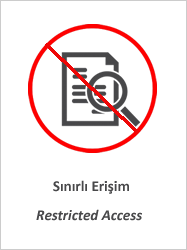A phenomenological hydrogen induced edge dislocation mobility law for bcc Fe obtained by molecular dynamics
Özet
Investigating the interaction between hydrogen and dislocations is essential for understanding the origin of hydrogen-related fractures, specifically hydrogen embrittlement (HE). This study investigates the effect of hydrogen on the mobility of ½<111>{110} and ½<111>{112} edge dislocations in body-centered cubic (BCC) iron (Fe). Specifically, molecular dynamics (MD) simulations are conducted at various stress levels and temperatures for hydrogen-free and hydrogen-containing lattices. The results show that hydrogen significantly reduces dislocation velocities due to the pinning effect. Based on the results of MD simulations, phenomenological mobility laws for both types of dislocations as a function of stress, temperature and hydrogen concentration are proposed. Current findings provide a comprehensive model for predicting dislocation behavior in hydrogen-containing BCC lattices, thus enhancing the understanding of HE. Additionally, the mobility laws can be utilized in dislocation dynamics simulations to investigate hydrogen-dislocation interactions on a larger scale, aiding in the design of HE-resilient materials for industrial applications.


















